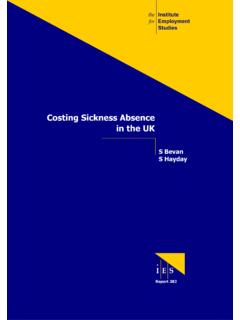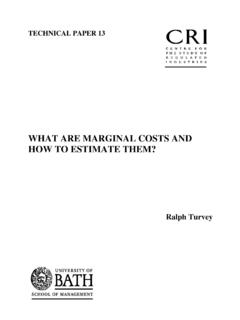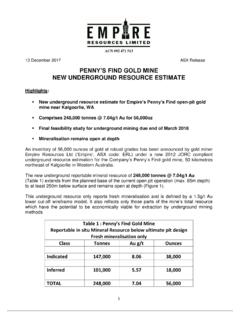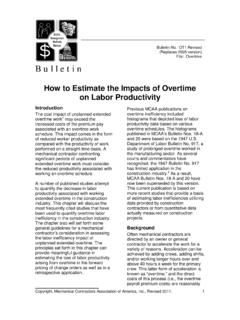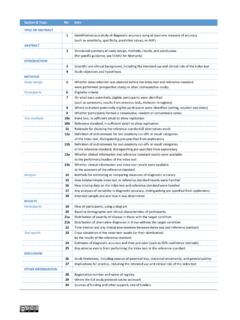Transcription of SAVANNAH HARBOR EXPANSION BANK EROSION STUDY …
1 CESAS-EN-GS. SAVANNAH HARBOR EXPANSION . bank EROSION STUDY UPDATE. GEOTECHNICAL AND HTRW BRANCH. SOILS SECTION. CITY FRONT, BIGHT SECTION, FORT PULASKI & NORTH TYBEE ISLAND. GEORGIA. 23 June 2011. CESAW-TS-EG i SAVANNAH HARBOR EXPANSION bank EROSION STUDY Update Table of Contents Section Page Introduction .. 1. Overview .. 1. General .. 1. Fort Pulaski and North Tybee Descriptions .. 2. Fort Pulaski .. 3. North Tybee .. 4. Fort Pulaski .. 4. North Tybee .. 6. City Front .. 6. Confined Disposal Facility (Bight Section) .. 6. bank Stability Review .. 6. Summary .. 6. CESAW-TS-EG ii Appendices Appendix A 2003 Fleet Forecast Appendix B 2011 Fleet Forecast Appendix C General Location Map References CESAW-TS-EG 1.
2 SAVANNAH HARBOR EXPANSION bank EROSION STUDY UPDATE. 1. Introduction The SAVANNAH District Geotechnical Section (CESAS-EN-GS) has completed review of the bank EROSION studies for the shoreline at City Front, Bight Section, Fort Pulaski and North Tybee Island. This report supersedes all previous bank EROSION studies for SAVANNAH River. STUDY Update is based on the revised Fleet Forecast received April 2011, and includes available soils information, bathymetry, topographic surveys, aerial photographs, historical information, observation/review of channel side slopes resulting from previous HARBOR widening and deepening projects, and information from previous dredging regarding channel side slope performance.
3 Direct correlations were made using the recently updated Ship Forces on the Shoreline of the SAVANNAH HARBOR Project' report completed by the US Army Engineer Research and Development Center (ERDC) in May 2011. Waves generated by ships traffic begins with an initial wave of a maximum height with trailing waves of a much smaller energy level. The duration of ship wakes on the shore are compared to everyday wave events, tidal, flow, rainfall, and other influences normal to the river system without ship traffic. 2. Overview This analysis estimates the loss of shoreline due to ship wakes as a direct result of deepening the SAVANNAH River shipping channel near the City Front, Bight Section, Fort Pulaski property and the northern beach of Tybee Island, if any.
4 This is taken as the difference between the ship wakes of today versus the ship wakes of the future, considering the without project condition compared with after deepening (with project). The total estimated shoreline EROSION (due to all causes) is based on aerial photography from 1964 through 2003. While additional data is available, it doesn't appear to change the outcome with regard to shoreline recession. Other shoreline changes are considered which include placement of dredged materials, armoring of adjacent shoreline, drainage features, and proximity of shoreline to the shipping channel.
5 3. General a. Original information available for the year 2003 and updated for 2010, the following without project forecast and calculations were completed for Containership + Tankers and General Cargo (GC) traffic: Information is presented for the total times (averaged) for any ship passing any given point of shoreline and thus causing waves that impact shoreline. Of the averaged event duration of seconds for the estimated or given fleet, only three seconds maximum (approximately 15%) of the initial wave represents the highest energy level of consequence regardless of the ship size or speed.
6 Smaller trailing waves are often less than wave activity normal to the shoreline at any given time without a ship passing event. CESAW-TS-EG 2. From information available for the year 2010: 3,205 calls * 2 (inbound and outbound) equals 6,410 passing events of duration approximately seconds for each ship corresponds to 125,636 seconds of impact during the year. Thus, the percent of time for ships passing any point is about ( ) of the year of which only about 15% can be considered as having an effective impact on adjacent shoreline. The result is for the year 2010. For the year 2017: 4,285 calls * 2 (inbound and outbound) equals 8,570 passing events, using same duration, corresponds to 167,972 seconds of impact during the year.
7 Thus, the percent of time for ships passing a given point is about % of the year and after applying the 15% impact correction, the result is for the year 2017. Predicted for the year 2030 and beyond: 7,204 calls *2 (inbound and outbound) equals 14,408. passing events of the same duration which corresponds to about 282,397 seconds of impact during the year. Thus, the percent of time for ships passing a check point is about % of the year 2030 and applying 15% for impact correction, the result is b. The latest Fleet Forecast from Economics, June 2011: For the year 2017: 4,285 calls were counted for the existing 42-foot channel depth and 4,133.
8 Calls are predicted if the channel is deepened to 47 or 48-feet. This indicates a notable reduction ( ) of calls, the result of which will reduce total energies and impacts to adjacent shorelines. For the year 2030 and beyond; 7,204 calls or 14,408 passing events are predicted for the without project (42') condition and 6,714 calls or 13,428 passing events predicted for the 47- foot to 48-foot depth condition. This represents about a 7 percent reduction of ship passing events which reduces EROSION forces interacting with the banks of SAVANNAH HARBOR when compared to the without project condition.
9 C. Ship length, beam, drafts, and speed were considered for the latest forecast. Evaluation of results yielded negligible adjustments to previous calculations. The results indicate that wave forces and passing events of predicted traffic within the deepened channel are reduced;. therefore minor adjustments were not included. d. Field measurements are presented in the revised report Ship Forces on the Shoreline of the SAVANNAH HARBOR Project. A copy of the report is available as a separate publication. 4. Fort Pulaski and North Tybee Descriptions Fort Pulaski The Fort Pulaski site is defined herein as the property along the shoreline from Georgia East NAD83 coordinates E , N (upstream) to , N (downstream); a distance of about 2,480 feet.
10 The property is located at the entrance to the SAVANNAH River from the Atlantic Ocean, directly adjacent to and on the outside bank of a 149. degree bend in the river. The general location is shown below. CESAW-TS-EG 3. FORT PULASKI / TYBEE LOCATION PLAN. The Fort Pulaski shoreline is unprotected and lies immediately downstream from the protected shoreline near the SAVANNAH Pilots Association (SPA) and immediately upstream from the protected shoreline at the lower end of Cockspur Island. A circular EROSION pattern exists immediately downstream from the SPA slope protection. The EROSION in this area has been observed to be caused by eddy currents from tidal flows, the extent of which far exceeds other noted EROSION anomalies.
